Canadian Museum for Human Rights will Transform Winnipeg
The Canadian Museum for Human Rights will open in Winnipeg this September and I believe it will entirely transform the city in the same manner that the Guggenheim Bilbao has transformed that northern Spanish city; so first a little history of Bilbao and how it is changing from a cultural backwater to a must see destination all because of one building. If you click on the link for Bilbao Tourism you would think that Bilbao has always been a vibrant Basque city with lots for tourists to see and do – with respect, that’s hokum. Bilbao was and to a certain extent remains the industrial heartland of northern Spain and a pale comparison to the beautiful belle epoque city of San Sebastian just up the coast. Much of its heavy industry has closed, victim of cheaper Asian labour markets. Maybe the best Canadian comparison would be to Hamilton where the giant Stelco plant, once the lifeblood of the city is now apparently permanently closed and instead of providing jobs, just constitutes a visual blight on the harbourfront. It’s like an anti-tourism magnet.
Not many years ago Alison and I went out of our way to drive the 100 kilometres or so from San Sebastian to visit Bilbao for one reason and one reason only – the Guggenheim. Entering the city through a huge network of road construction there was nothing to see but an industrial wasteland until suddenly, across the river the Guggenheim comes into view and the city turns from a frog to a prince. The first time I laid my eyes on it I had to pull over or risk a crash, because my attention was riveted by this fantastic building. I remember saying to Alison” Holy s**t, it really is as spectacular as everyone says!”. It truly is one of those buildings you have to see to appreciate the impact. The Guggenheim was voted by a panel of architecture critics to be the most significant building erected anywhere in the world between 1980 and 2010 and fanfare please, it was designed by a Canadian. Frank Gehry is unquestionably one of the most visionary architects of the last hundred years. His rejection of straight lines and conventional materials reminds me very much of the great Catalan architect Antoni Gaudi who almost single-handedly made Barcelona one of the most interesting cities in the world from an architectural point of view. So, to me, it’s no coincidence that the Guggenheim Foundation chose Frank Gehry to transform another northern Spanish city.
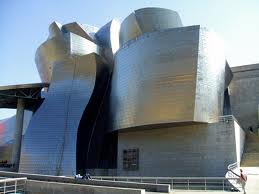
So what do I remember about the art at the Guggenheim? Surprisingly little. Probably the most memorable piece of art is not inside the museum, but outside – Jeff Koons gigantic Puppy, made up almost entirely of live plants. Looking at the website I see that there is a current exhibition of Yoko Ono works all summer – gag me with a spoon. The fact is the building, inside and out combined with its spectacular location are what has brought over 10 million people to Bilbao since its opening – the art is strictly secondary and I think that’s really important to keep in mind when I finally get to writing about the Canadian Museum for Human Rights.

The Guggenheim Bilbao was essentially the brainchild of a group of Bilbao politicians and businessmen who knew that their dying city needed the equivalent of a shot of adrenalin to the heart to revive it. The Canadian Museum for Human Rights was, in contrast, the idea of one of Manitoba’s greatest sons, the late Israel (Izzy) Asper. From small town roots in Minnedosa Izzy was first a brilliant tax lawyer and then a politician. Unfortunately he chose to lead the Liberal Party in a province that hasn’t elected a Liberal government since the 1950’s. It was a hopeless task. I should know – my father couldn’t get elected as a Liberal in Manitoba even during Trudeaumania. Rejected by the voters Izzy turned to business and in an incredibly short period of time built CanWest Global into a multi-billion dollar company. With money in hand Izzy turned to philanthropy and created the Asper Foundation. After taking children to see the Holocaust Museum in Washington, he came up with the idea of a museum that would have a much wider mandate than examining just one horrible example of human right’s violations; a museum that would focus primarily on the idea of human rights instead of mankind gone astray.
The idea took off – so much so that the Federal government got onside and decided to make it the first official national museum to be built outside Ottawa. Before my fellow Haligonians get up in arms and point out that Pier 21 or The Canadian Museum of Immigration is a national museum that pre-dates the Canadian Museum for Human Rights, there is a subtle distinction. Pier 21 was already in existence when it was converted into a museum whereas the Canadian Museum for Human Rights was built specifically as a museum. Not worth getting our shorts in a knot about.
For the past five years on each of my visits to Winnipeg I have been watching the progress as this building in the area known as The Forks where the Red and Assiniboine Rivers meet. Designed to resemble a mountain, it has grown much the way a volcano would, from a broad base to narrow peak. From day one it has been obvious that this was no ordinary building and I am glad to report that the completed project transcends the idea of a building as a place where things happen inside to one that is exceptional for the sake of the building alone. They could be manufacturing widgets inside and it would not take away from effect the building has on the observer.
The project has not been without controversy or detractors. Ignoring the usual “We shouldn’t be spending money on (insert whatever good idea you can think of) while there are still (insert whatever group will always be with us and impossible to help)”, much of the criticism has come from groups that mistakenly believe that the Canadian Museum for Human Rights is about portraying the suffering of various groups, especially the Jews, at the expense of others who believe they have suffered as much or more. Winnipeg has a large Jewish population which has contributed very heavily to the project and it unfortunately has a large anti-Semitic population as well and I suspect that some of the criticism is tied to that. However, the one thing the museum does not want to be and is the anti-thesis of its mandate, is a lightning rod for discontent and competition between various ethnic groups. Being all inclusive will never be easy and there is no way that every group will be pleased with the presentation of the exhibits – that’s just impossible.
So harkening back to my comments on the contents of the Guggenheim, Alison and I were fortunate enough to be given a sneak preview of the building before the exhibits were opened. Thus we could see the building, inside and out for what it is – Canada’s next great cultural icon. Keeping in mind I am no architectural critic ( I just knows what I likes!), here as best as I can put in words are my impressions of the Canadian Museum for Human Rights.
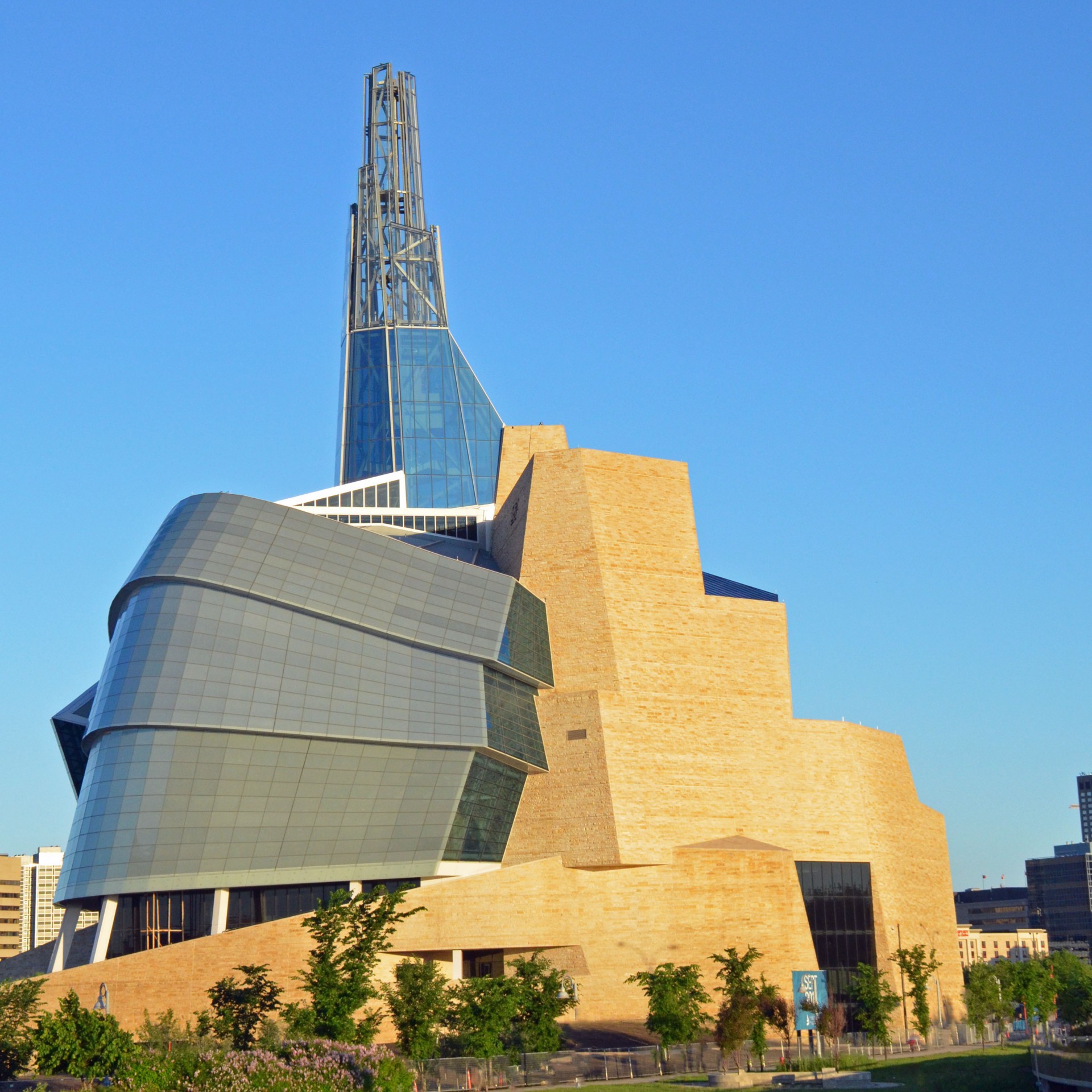
First, the location. The raison d’etre for Winnipeg is the confluence of the Red and Assiniboine Rivers at a place called The Forks where for at least 6,000 years people have been coming together. When I lived in Winnipeg this area was an industrial wasteland, however, it is now Winnipeg’s top tourist attraction. The museum is sited just beyond The Forks on land that was the subject of Treaty No. 1, the first treaty signed by Canada as a nation in 1870. It overlooks both downtown Winnipeg and the beautiful pedestrian walkway over the Red River to St. Boniface, Esplanade Riel. In other words it is in a perfection location to complement some of Winnipeg’s top tourist sites.
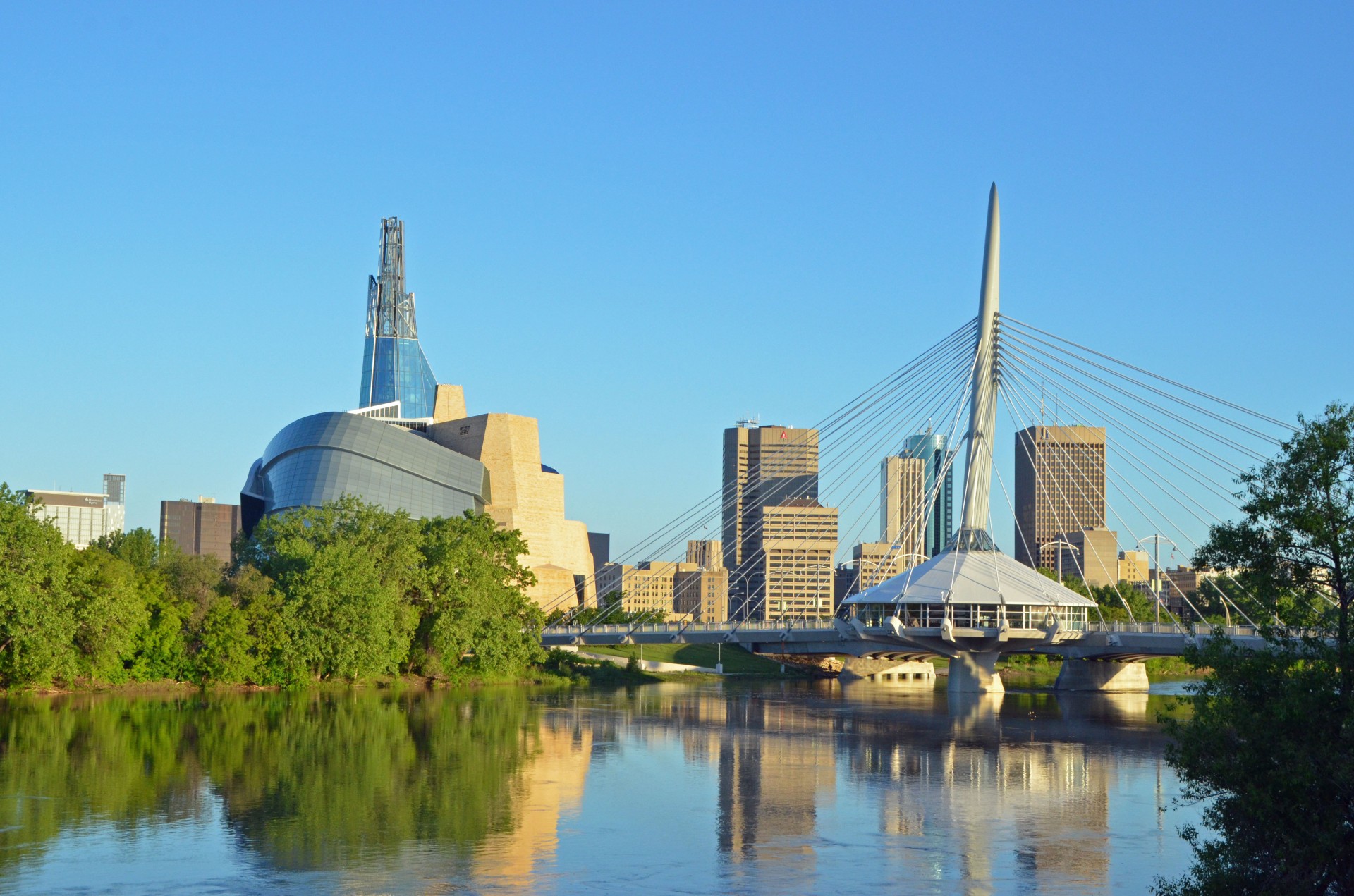
Second, the architect. If the Spanish with their great history of architects could accept a Canadian to design the Guggenheim then there is no reason to be offended by the choice of American Antione Predock to take on this assignment. If you follow his link you will see a beautiful night shot of the CMHR. Check out his other projects and you quickly realize that this guy does literally ‘think outside the box’. As a Westerner Predock really gets the importance of the interplay between man and nature and that the latter is not something to be conquered or absorbed or ignored by the former.
UPDATE:
Years after writing this post I visited another of Predock’s great buildings in his home state of New Mexico. Read my post on the Albuquerque Museum to find out why it is the best in the state.
Third, the materials. Manitoba Tyndall stone is one of the most famous natural building materials on earth. Look no farther than the grand Manitoba Legislature or the Parliament Buildings in Ottawa or the post-modern Canadian Museum of History for examples of its use. It would be no more thinkable to ignore this native sedimentary rock in planning a building of this magnitude than it would be to make an igloo out of steel. Gotta have the Tyndall stone as a starting block.
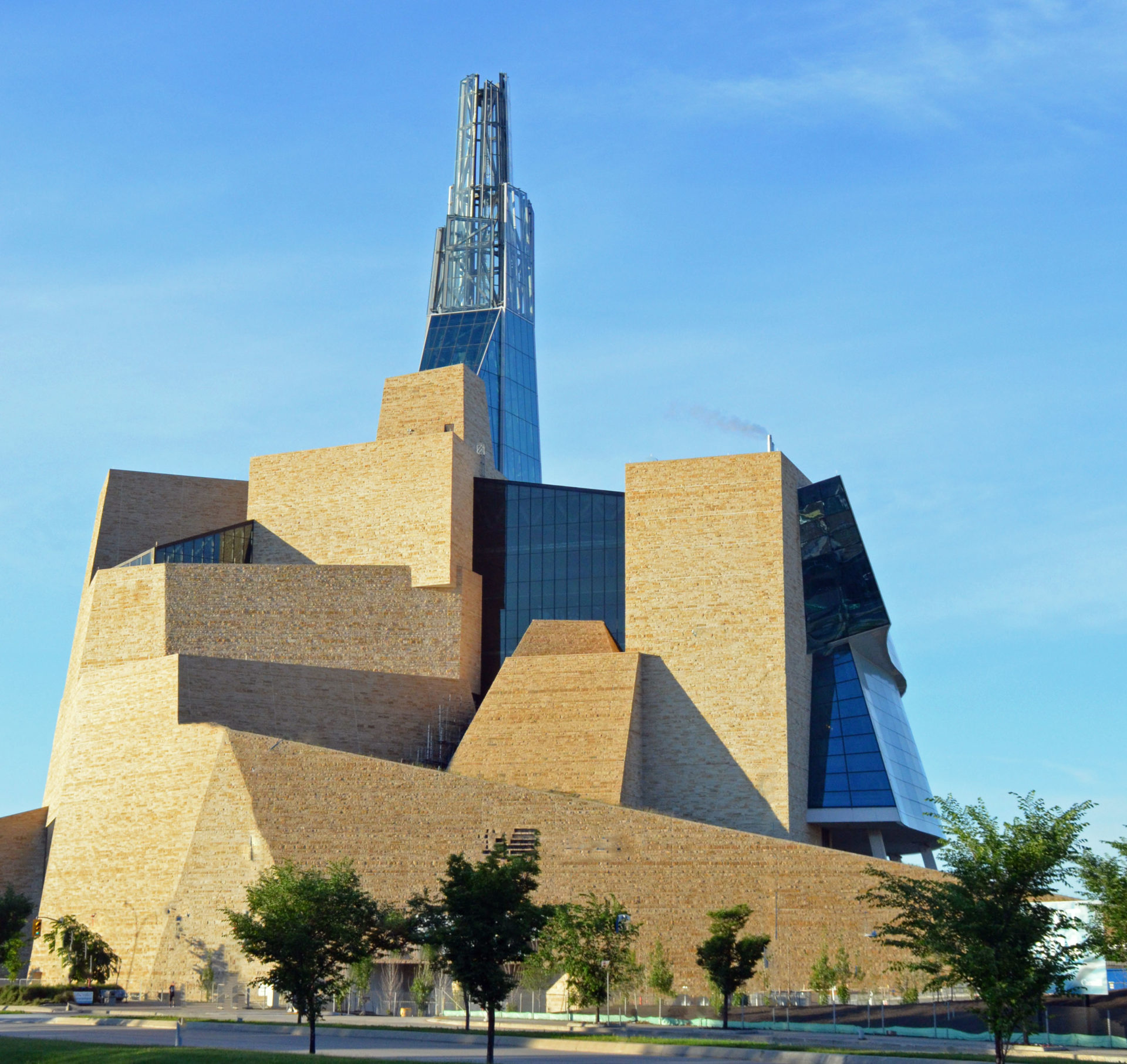
Next, the proper use of glass, both to let light in and out and to create reflections, is pretty de rigeur in modern architecture. You have to ask yourself if this can be the same building that is shown in the photo above.
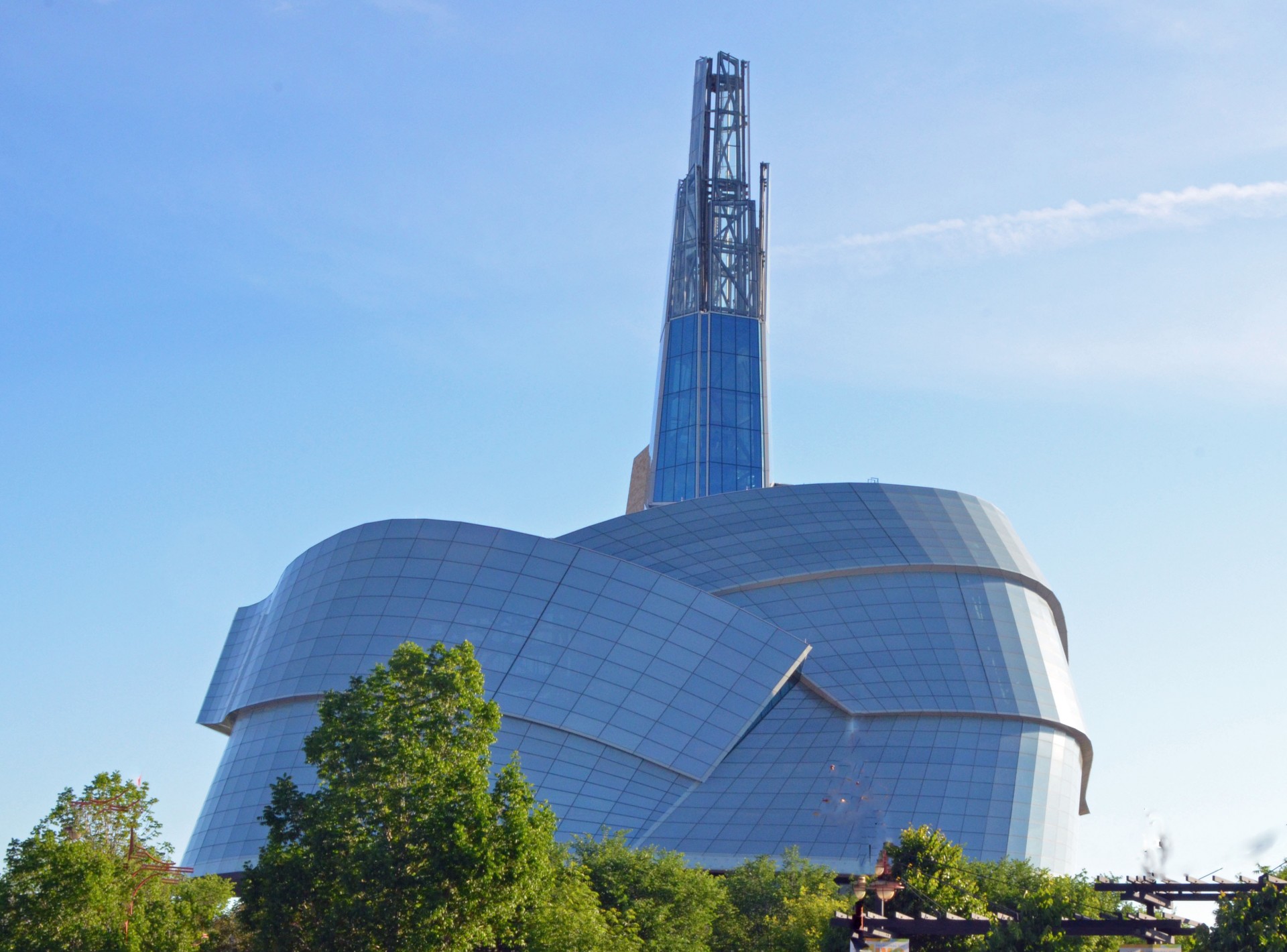
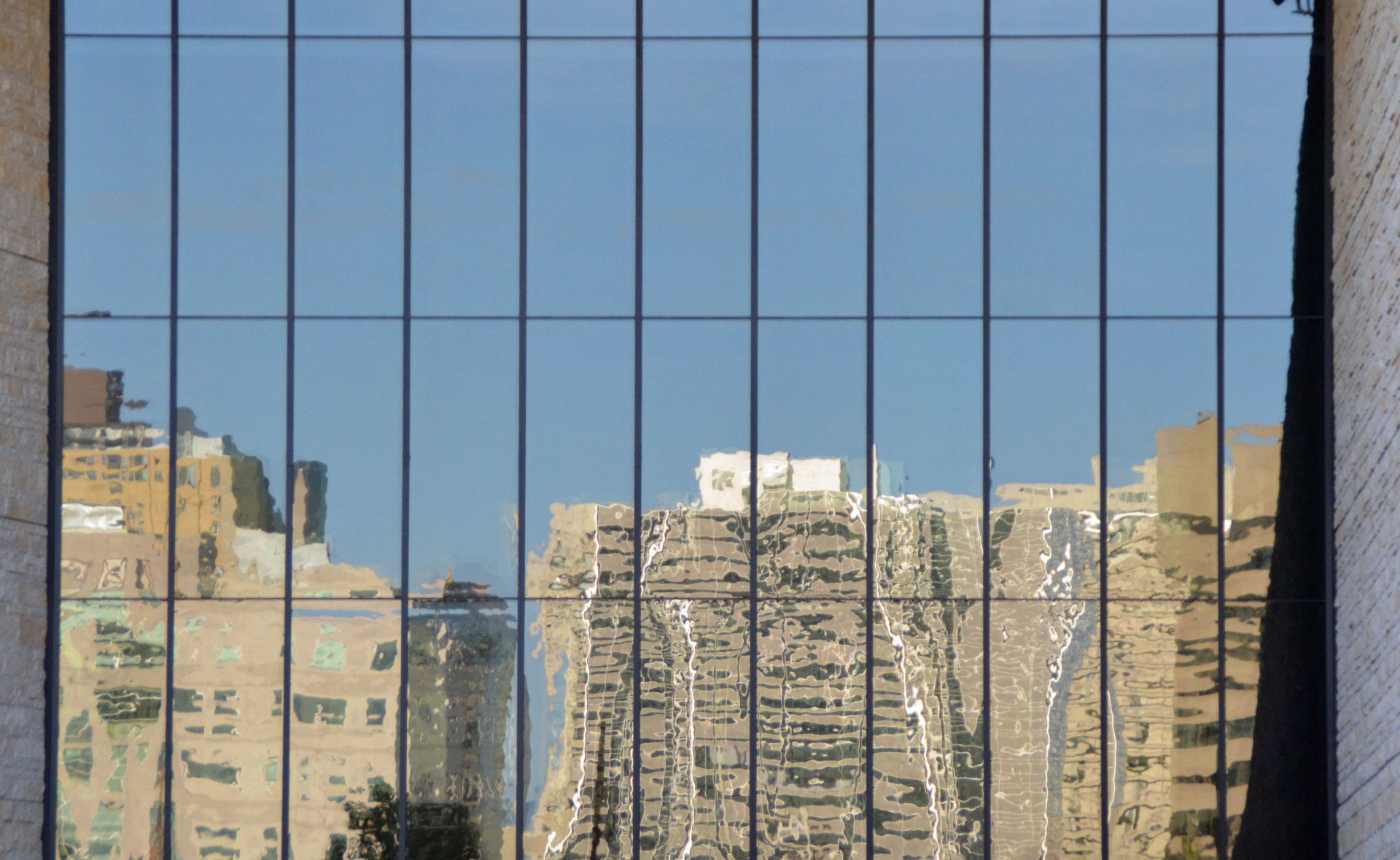
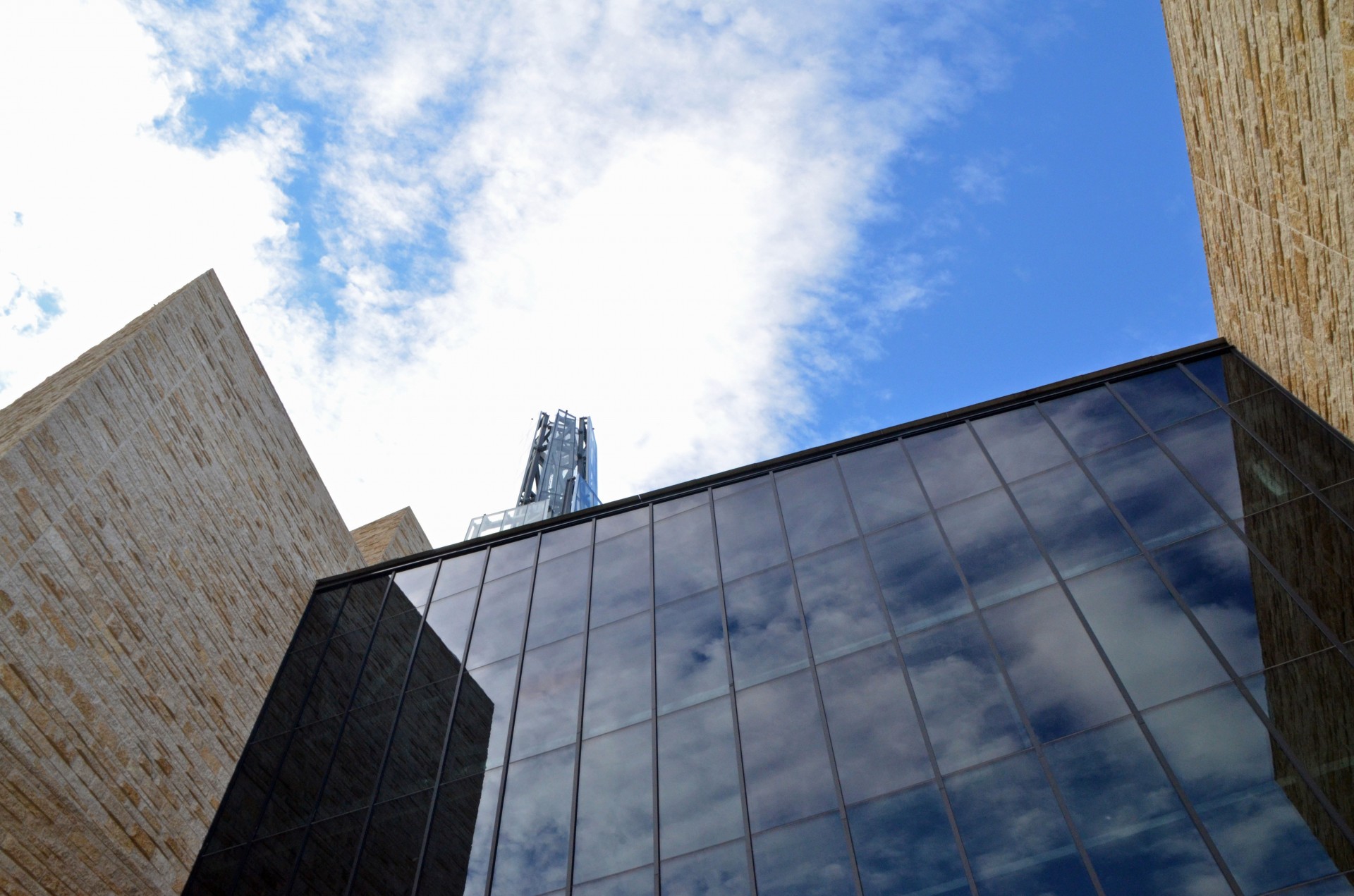
And of course steel. We need to go inside to appreciate that.
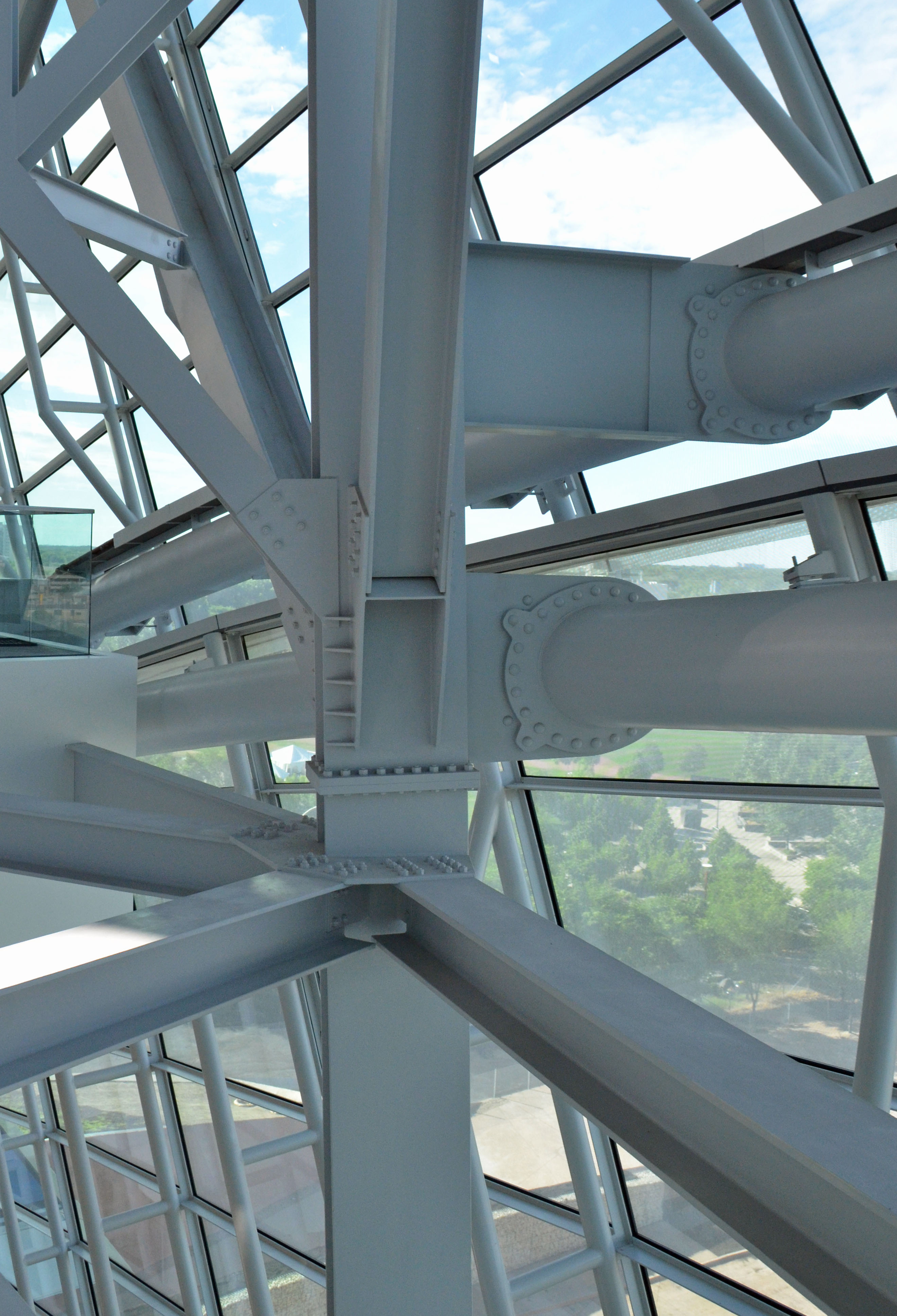
Here’s where they come together.
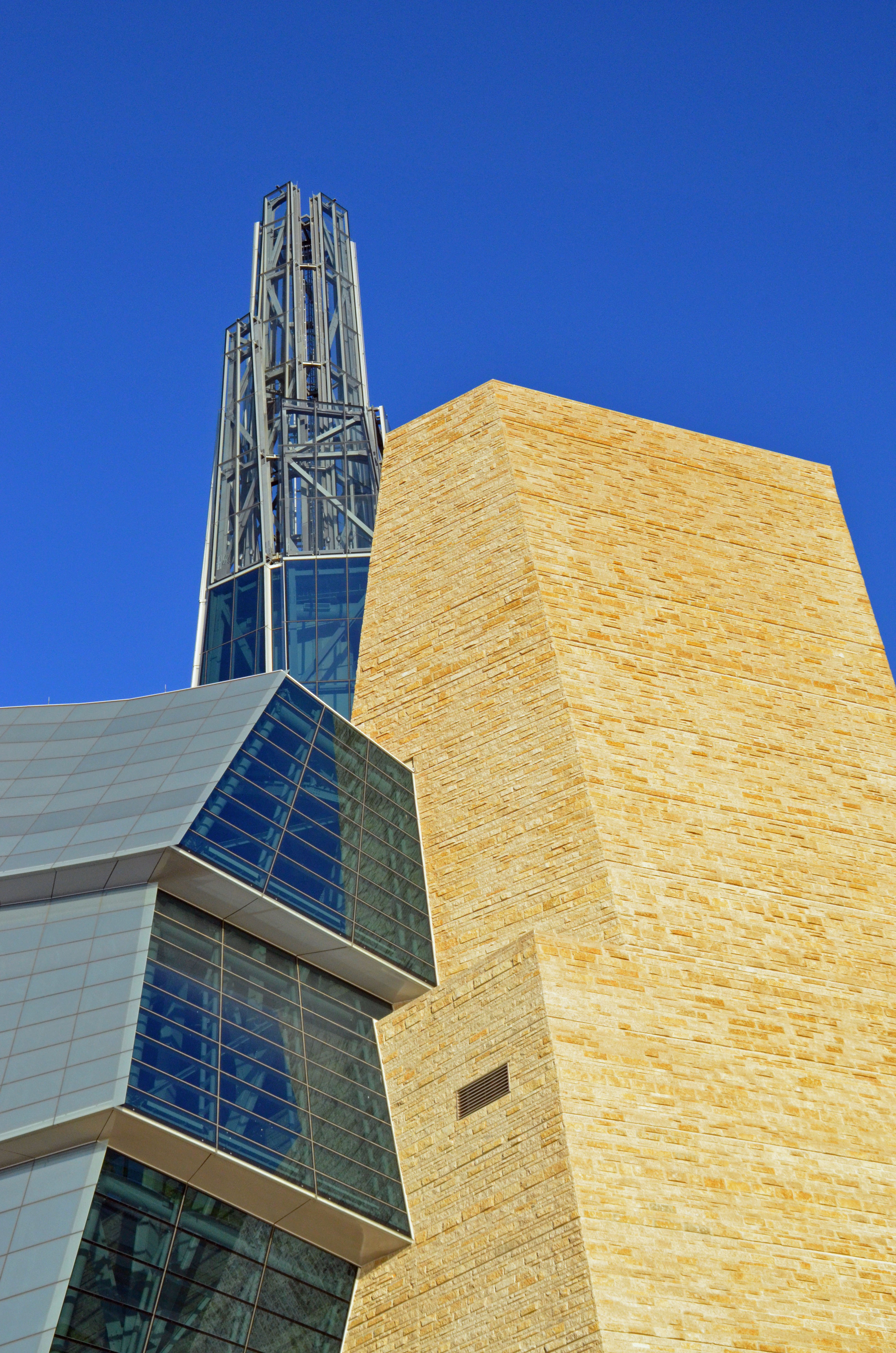
How about basalt from Outer Mongolia?
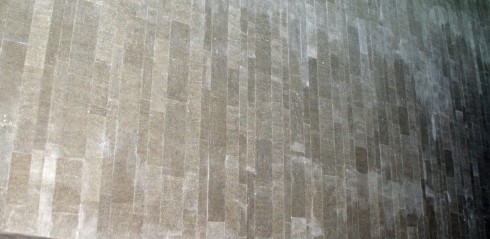
Fourth, the interior. I found the interior of the CMHR very difficult to photograph (even the official website does not have shots that do it justice). There is so much open space that it is difficult to conceive that somewhere in here there eleven separate galleries that will be dedicated to all aspects of human rights. Suffice it to say that there are many different vantage points that involve looking up.

Looking down.
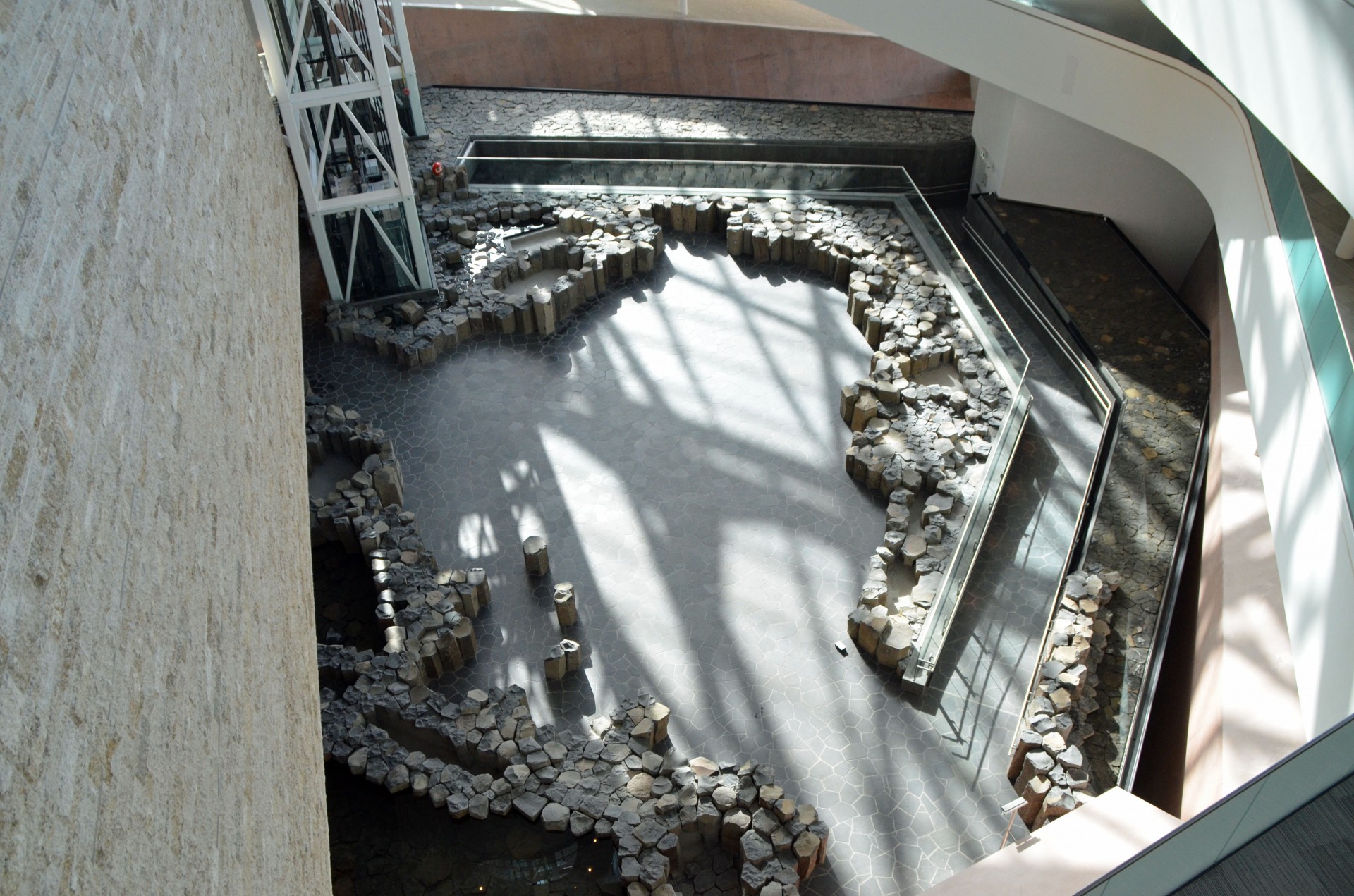
Looking across.
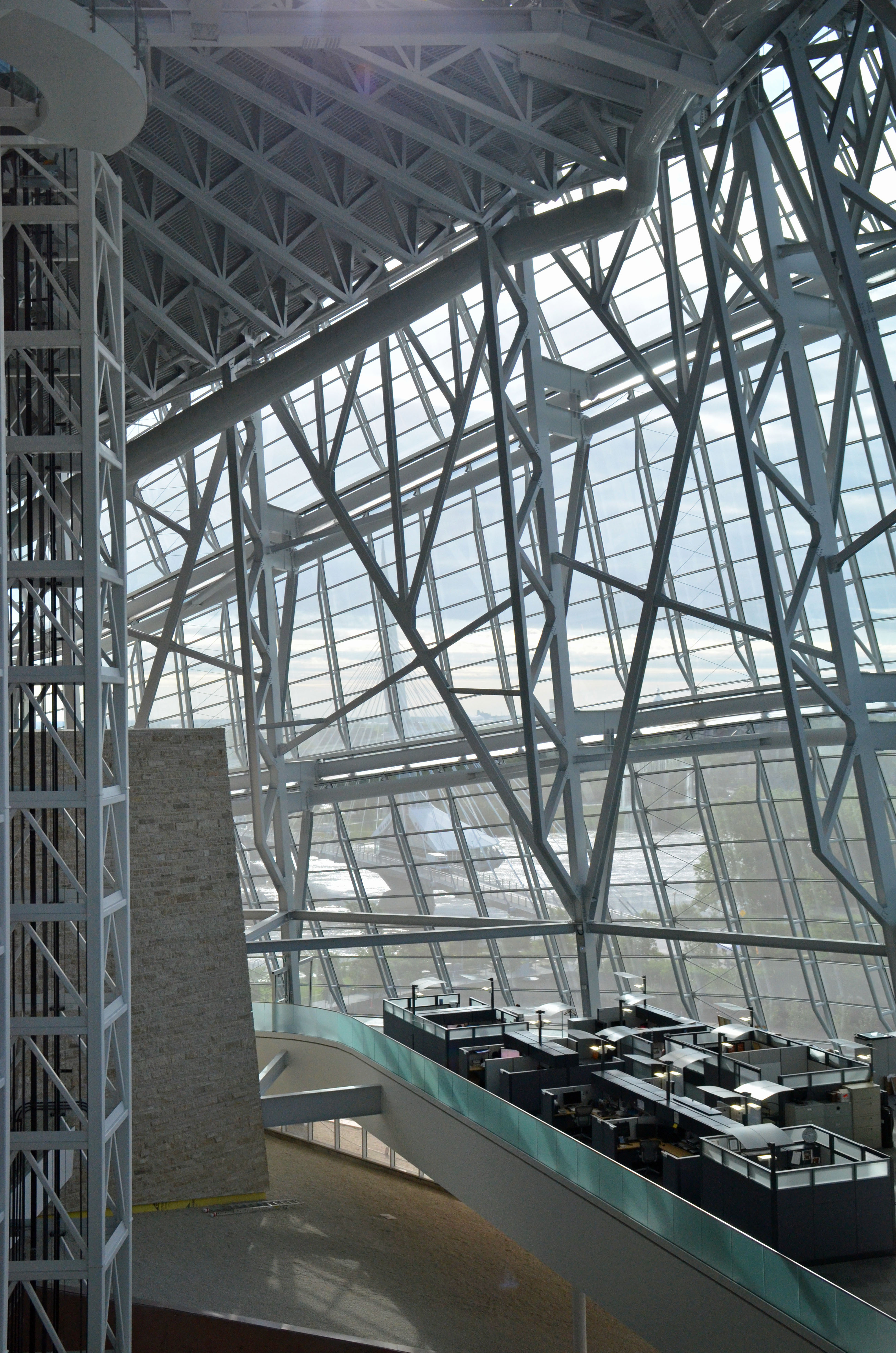
As you see the interplay of light and shadow is pivotal. The camera does not pick up the excellent view of Esplanade Riel and St. Boniface through the glass.
Fifth, the view. Unfortunately I was not able to climb the spiral staircase that leads to the Tower of Hope to see what will undoubtedly become one of the most iconic viewpoints in Canada.
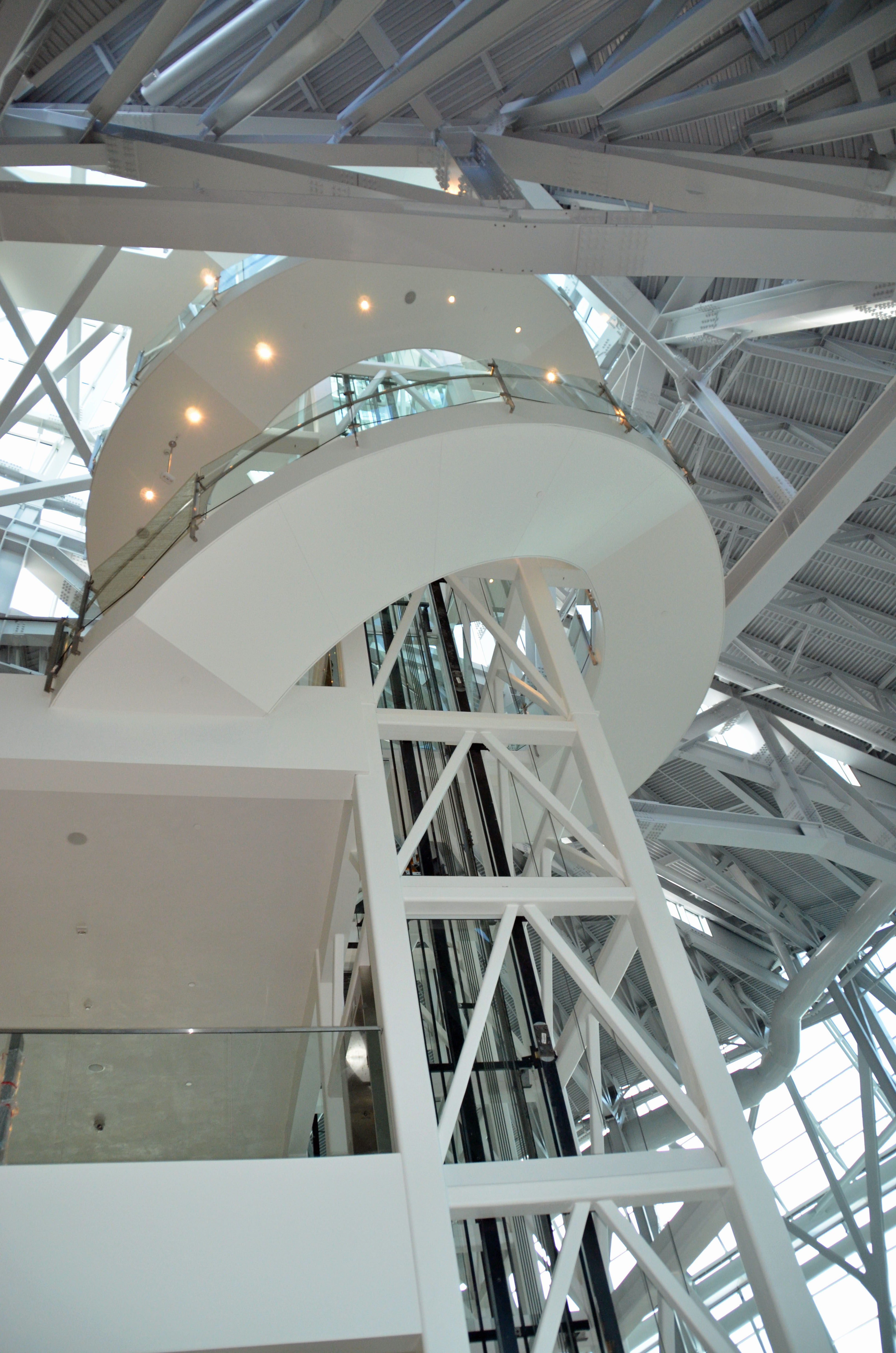
However, I did take this shot from the Terrace which is about halfway up the building. I can’t wait to see the 360 degree panorama from the Tower of Hope.

So that’s my take on the CMHR without having the benefit of actually seeing the exhibits. Come this September, come for the exhibits, but stay for the building.
I’d like to thank Maureen Fitzhenry for taking the time out of her busy schedule to give us a personal guided tour. My next post from Winnipeg features an early morning walk and history lesson. Please join me.
UPDATE: Alison and I returned to the Canadian Museum for Human Rights and another tour with Maureen Fitzhenry a few years after it opened. While the interior was very interesting, more so than the Guggenheim I thought, the star attraction was still the building itself.

